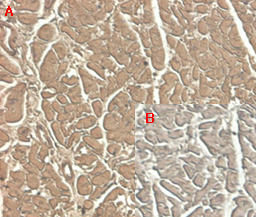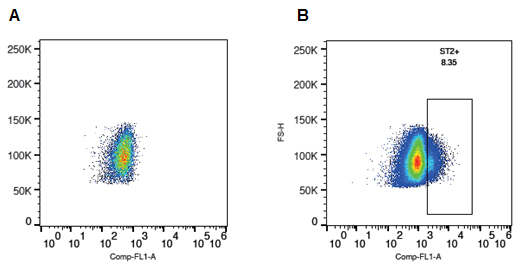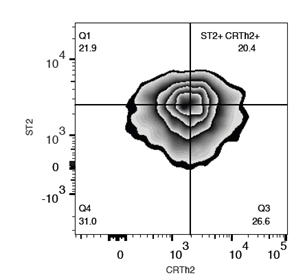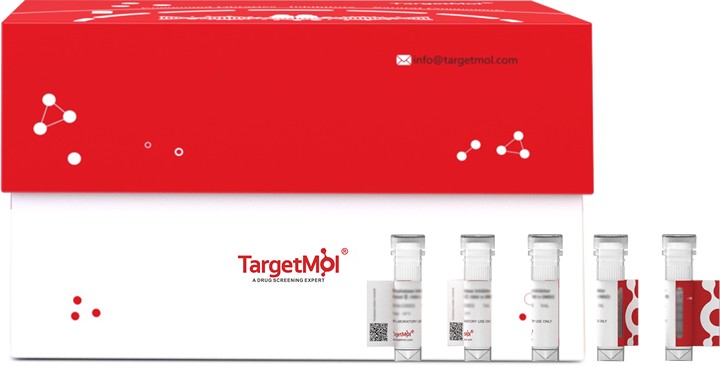
Specific interaction of human ST2 (Prod. No. AG-40A-0059) with recombinant human IL-33. An indirect competitive ELISA was performed as follows; 1) coat microtiter plate wells with hST2-Fc (10microg/ml); 2) add a varying concentrations of hIL-33 with
ST2 (human):Fc (human) (rec.)
AG-40A-0059
Protein IDQ01638
Product group Proteins / Signaling Molecules
Overview
- SupplierAdipoGen Life Sciences
- Product NameST2 (human):Fc (human) (rec.)
- Delivery Days Customer10
- CertificationResearch Use Only
- Concentration0.5 mg/ml
- Estimated Purity>90%
- Protein IDQ01638
- Protein NameInterleukin-1 receptor-like 1
- Scientific DescriptionProtein. Signal peptide and the sequence of isoform 2 of human ST2 (aa 1-328) are fused at the C-terminus to the Fc portion of human IgG1. Source: HEK 293 cells. Endotoxin content: 90% (SDS-PAGE). The ST2 (Interleukin-1 receptor-like 1; Interleukin-33 receptor) gene was originally identified as a gene induced by serum or oncogene expression in fibroblasts. The gene produces a shorter soluble secreted form (ST2) and a longer, transmembrane form (ST2L) by alternative splicing. Soluble ST2 has been shown to downregulate the expression of TLR1 and TLR4. ST2L negatively regulates TLR4 signaling and induces endotoxin tolerance, and enhances Th2 responses. IL-33 is the specific ligand for ST2L. - The ST2 (Interleukin-1 receptor-like 1; Interleukin-33 receptor) gene was originally identified as a gene induced by serum or oncogene expression in fibroblasts. The gene produces a shorter soluble secreted form (ST2) and a longer, transmembrane form (ST2L) by alternative splicing. Soluble ST2 has been shown to downregulate the expression of TLR1 and TLR4. ST2L negatively regulates TLR4 signaling and induces endotoxin tolerance, and enhances Th2 responses. IL-33 is the specific ligand for ST2L.
- Storage Instruction-20°C,2°C to 8°C
- UNSPSC12352202





